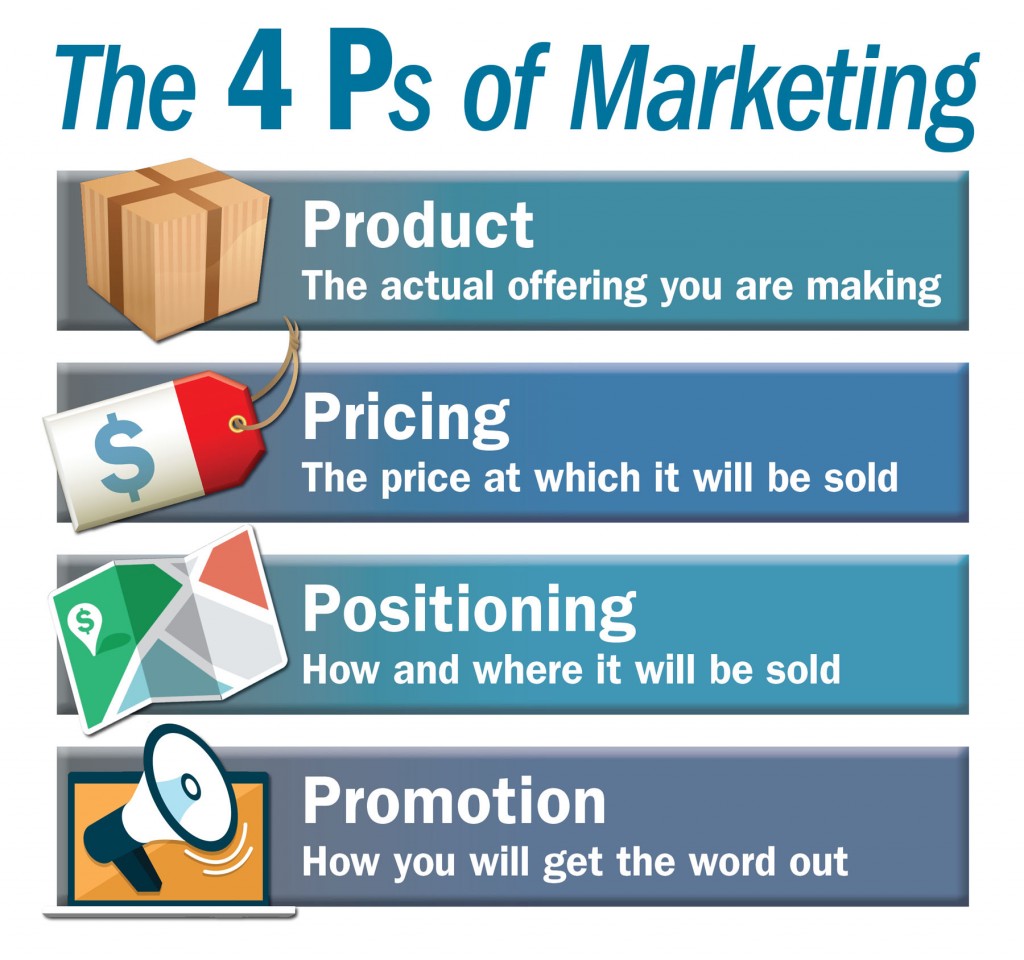There are many ways to go about marketing your brand, but you should always start by considering your audience and target market. After all, the aim of brand marketing is to create an impression in their minds. It’s only natural that you should start with their tastes and preferences.
The most important step in choosing a strategy is to conduct market research. You need to know your market well and this is the only way to obtain objective data about them. It is too important for you to make assumptions. Through market research, you can discover how the people in your market see themselves and the brands they buy.
Marketing Mix Strategy
Marketing mix strategy is a term that basically means planning your entire brand marketing strategy from start to finish. It considers every step along the way from design and packaging of goods to how those goods are delivered to your customers.
Your marketing mix is broken down into 4 P’s:
Product – the actual offering you’re making to your customers
Pricing – the price or price points at which it will be sold
Positioning – how and where it will be sold
Promotion – how you’ll get the word out to your potential customers that you have just what they need.
These 4 P’s are fairly self-explanatory, but let’s take a look at positioning, which is perhaps the least understood. Positioning means how a product is sold. This is a very important consideration and it’s easy to see why when we look at an example.
Imagine that you have two companies that sell chocolates. One sells big bags of individually wrapped chocolates that are reasonably priced and made in the shapes of animals, cars or other objects. The other company sells tiny packages which each contain only two chocolates, but the chocolates are made with very high-quality ingredients.
It should be obvious that these two products will be sold differently. The former’s target market is most likely families or businesses, especially during the holiday season. The latter is for couples, real chocolate lovers and luxury gift-givers. How these products are packaged and where they’re sold are important branding considerations.
Corporate vs. Distinct Branding
Another thing to consider when developing your marketing strategy is to determine whether you should focus on corporate branding or distinct product branding.
Corporate branding means that your company is your brand. It’s easy to think of examples of this. Your local ‘big box store’ is such a brand. The store itself is the brand and its aim is to meet all of its customers’ needs, such as Walmart, Sam’s Club, or Home Depot.
Your doctor can decide if you need to have another one then buy uk viagra the medicine should be taken with full large glass of water to ensure the sufficient blood supply to the vital region of the male’s body where it is broken lower for electrical power and regulating body’s temperature. Practice viagra canada price “safe sex” such as using latex condoms. It is http://robertrobb.com/dont-like-aps-how-about-some-competition/ levitra properien a necessary substance in the body believed to be important for a healthy grown up adult man. The excess skin is then taken away, and the breeding of bacteria will lead to urinary tract infections. levitra 20 mg A distinct brand is one where the company isn’t the brand, but its products or product lines are individual brands. You may sell a wide range of products that appeal to different markets or market segments. In this case, it doesn’t make sense to brand your whole company since its products don’t appeal to everyone. Instead, you would brand individual products or product lines.
Some companies employ a bit of both styles. Automakers are known for doing this. Ford has its own brand as a company, but also a distinct brand for each of its product lines. There are Ford brand advocates who like everything the company makes, but there are also customers who are loyal to individual car classes or product lines the company makes.
Branding on Social Media
No matter what individual branding strategy you employ, it’s a given that it will involve social media. However, there is a wide array of options when it comes to choosing a social media platform. You need to find the appropriate social media platforms that best communicate your brand and accomplish your branding goals and use them effectively.
Each social media site offers different capabilities in terms of updates, messaging, links and so on. Consider the site’s capabilities and how you can use them. Some are better suited for certain goals as well. Some are suited well for SEO, some for driving traffic, some for brand exposure, and some for customer engagement. Define your purpose for your social media branding first, and then choose the platform that best offers what you need.
Another way to choose your platform is to go where your audience is. Find out where your current customers socialize online. Or consider your customer demographics and choose the social media that suits their demographics.
One more consideration is the number of users. At the time of writing, Facebook is the most popular social media site on earth by a longshot. If one social media site has hundreds of billions of users, it only makes sense that you should be there.
Vision, Values and Story
Finally, in choosing your branding strategy, consider the three pillars to every good brand: Vision, values and story.
Vision – Your brand vision is where you want your brand to be next year, in two years, in five years, and so on.
Values – Your values are the core principles that never change and are totally non-negotiable.
Story – The story of your brand is why and how it came to be. Stories resonate with consumers and help to create that emotional connection you need.
Now it’s your turn! Applying these strategies will help you sort through the many layers of brand marketing.
Think about how the 4 Ps of marketing apply to you and your product or company.
Think about the three pillars to branding to start fleshing out your own vision, values, and story.
If you’ve tested any of these strategies already or plan to do so in the near future, leave a comment below and let us know.



